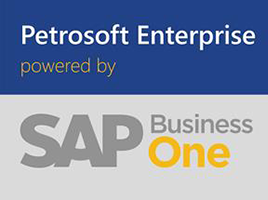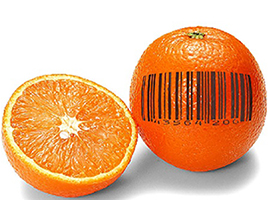The evolving role of ERP solutions has become the center of debate in many organization as they struggle to predict if ERP is here to stay or about to become a victim of digital transformation. This is no simple question, yet one that must be addressed by manufacturers as they prepare for the next wave of technology innovation that is unfolding.

Rapid change has been a strain on manufacturers for the past decade. Keeping up with the onslaught of disruptive technologies has exhausted many organizations, financially and mentally. The continual state of heightened alert is taxing — but quite necessary. Now more than ever, manufacturers must be vigilant, preparing for waves of transformation, actively evaluating new IT technologies, and striving to outpace the leagues of competitive challengers. The variety of new technologies is immense, from configuration tools, mobility and social collaboration to 3D printing and Internet of Things. Of course, ERP solutions are among the mix of solutions competing for IT dollars.
The evolving role of ERP solutions must be understood for the manufacturer to make sound decisions and strategic IT investments about replacing, upgrading or extending their core business systems. Skeptics may think it is better to invest in specialized apps and user productivity tools. Others may think IT security and hardware should be investment priorities. Decisions often come down to one core question: Are traditional ERP solutions robust, agile and dynamic enough to manage the complexity of a global, digital economy?
Modern vs. Obsolete
To answer questions about ERP technology and its ability to manage the new state of manufacturing, we must first define today’s modern ERP solution and discern how it is different from yesterday’s traditional ERP. The many distinctions will help explain why generalities about ERP solutions are dangerous. They are not all created equal. A modern solution, designed for progress and deployed in the cloud, is quite different from the monolithic one-size-fits-all solution that manufacturers implemented in the 1990s.
The evolution of ERP solutions is a winding road. When the term was coined in the 1980s, the solutions were primarily business platforms that managed cash flow and helped organizations track expenses and assets. Real-time access to one version of the company’s financial status may seem rudimentary now, but it was a major accomplishment for organizations who had previously relied on spreadsheets and ledgers while every department kept its own set of reports. Manufacturing veterans may remember those days with a hint nostalgia, but manufacturers who are still running these outdated systems will have a hard time keeping up with changing performance standards.
By the early 2000s, the massive ERPs with proprietary code sets and rigid architecture started to give way to point solutions created to manage a plethora of specialized functions from warehouse management to shop floor logistics and sales accounts. Integration was the challenge. Modifications were tempting, yet difficult to manage. These solutions, sadly, were also considered “past their prime” and in need up upgrades.
Today, modern ERP solutions reinvent the concept of ERP. They go a step further in many dimensions, providing flexibility, integration of tools, functionality tailored for vertical industries, plus intuitive usability that eliminates the need to beg the IT department every time a specialized report is required. Some ERP solutions are written in open source architecture making it easier than ever to integrate third party tools and adapt the features as new solutions and applications become available. The ERP is elastic, stretching with the organization, growing, where and when needed. This type of ERP is certainly well equipped to step up to the challenges of digital manufacturing.
Digital Manufacturing’s Requirements
As manufacturers take stock of their current infrastructure and begin (or accelerate) deploying their digital strategies, it makes sense to perform an audit of current ERP capabilities. This will help recognize if the legacy ERP is “modern enough” or seriously lacks in one key area which could prove to be disastrous in the near future. Here are some specific capabilities that will likely be essential to manufacturers by 2020:
- Vast data storage. As manufacturers roll out their Internet of Things strategies and begin fine-tuning use cases for collecting and aggregating massive amounts of unstructured and structured data, storage will become critical. Most companies will find the elasticity of the cloud to be essential.
- Cloud Deployment. Cloud deployment offers many benefits to digital manufacturers, including the “always modern” features and subscription model which means a predictable, manageable monthly fee rather than a one-time capital investment.
- Data science. IoT strategies, elements of Digital Manufacturing, require advanced Business Intelligence, Big Data and Data Science in order to turn the vast amounts of data collected from sensors into meaningful insights. Science provides the advanced algorithms that allow machine learning, predictive analytics and automated responses to predefined trigger events.
- Talent science. Recruiting and retaining right-skilled workers is more challenging — and more critical — today than ever before. Manufacturers need advanced talent science solutions to help with onboarding, training, tracking certifications and managing expectations in a changing workforce.
- Global supply network. Relationships with supply chain partners are critical. Not only must resources and deliveries be tracked with real-time accuracy, but manufacturers must be able to turn to advanced SCM solutions to help with predicting and planning capacity and proper inventory levels.
- Customer engagement. Today’s customers are highly demanding — whether in a consumer industry or business-to-business. Customers expect speed, value and highly personalized products. With the right tools to manage the customer engagement, manufacturers can turn customer interactions into a differentiating factor, building loyalty and increasing sales.
- Product lifecycle management. Manufacturers must speed innovation and manage the product lifecycle to better meet expectations of customers. Advanced PLM solutions help manage the process with greater ease and value.
- Asset maintenance. The factory of the future must run without unexpected delays and downtimes. Enterprise asset maintenance is critical to keeping equipment running smoothly at high efficiency. Proper preventive maintenance can also help extend the lifecycle of equipment, helping the manufacturer get more value from assets.
Manufacturers should consider this their checklist of must-have features in order to be ready to stand up to the challenges ahead. As more and more manufacturers adopt digital manufacturing strategies, the competitive landscape will only become more stressful. Manufacturers will need to turn to their ERP solutions in order to maximize performance. And, not just any ERP will suffice. Manufacturers who are nursing outdated systems and trying to get by with obsolete ERP functionality likely will fall prey to fierce competition. Only modern ERP solutions — with the full range of re-invented, advanced features and flexible architecture will stand the test of digital manufacturing. Is your ERP modern or obsolete?
Author: Larry Korak, Global Industry & Solution Strategy Director of Discrete Manufacturing at Infor.






